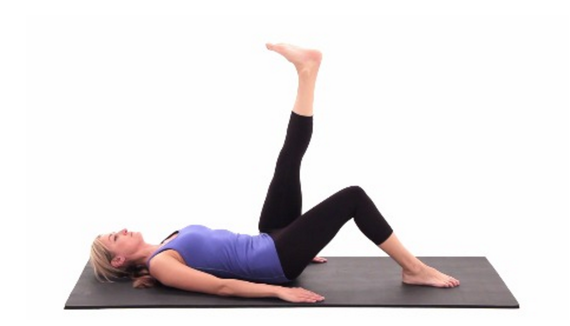According to the 2016 study (and previous studies) on postnatal pelvic girdle pain, Response of the muscles in the pelvic floor and the lower lateral abdominal wall during the Active Straight Leg Raise in women with and without pelvic girdle pain: An experimental study , women with pain activate muscles differently. There's help for this!
The important findings are:
During the subsequent ipsilateral leg lift (lifting the leg on the same side as the painful pelvic region):
* pre-activation in the pelvic floor muscles was observed in 36% of women with pelvic girdle pain and in 91% of pain-free women
*Compared to pain-free women, women with pelvic girdle pain also showed significantly later onset time in both the pelvic floor muscles and the muscles of the lower lateral abdominal wall
We know from previous studies (one of many) that there are many prognostic factors that can relate to persistent pelvic girdle pain such as age, muscle function, disability, and previous fitness level/pain levels . What does this all mean for patients ? How can we help those of you who are dealing with lumbar and pelvic pain , even years after having a baby?
The key is to address each patient individually. There are numerous layers to the pain experience - beyond just the location of pain. It is likely also simplistic and erroneous to assume that the pelvis is "too unstable" or that the sacroiliac joint is just hypermobile (there are certainly cases of people who have hypermobility as a component such as with Ehler's Danlos Syndrome, but even then, there are other factors). If you find that you have been seeing other healthcare professionals for years telling you that your leg, sacroiliac joint, or pelvis keeps going "out," that's likely not the issue. From a whole-person perspective, there are factors to consider such as hormonal, physical, sleep/lifestyle, social, and psychological (not "it's-in-your-head type, but rather effects of anxiety, stress, previous pain, or previous trauma, etc) . Therefore, addressing these factors AND taking a closer look at the pre-activation/motor control of the muscles and general movement patterns is an ideal approach.
If you are a patient dealing with pelvic girdle pain, sacroiliac joint pain, lower back pain after having a baby (even years later), there's a lot of hope for getting better! A pelvic physical therapist can assess you individually to facilitate the best plan for your daily life and also provide an optimal exercise plan to guide you to relatively pain-free movements! This goes beyond simply giving a list of exercises and saying good luck! That's why so many women continue to have pain for years later. We can also work closely with your pregnancy /postpartum specialists - there are some incredible ones out there too.
For professionals - The key is how do we improve/facilitate the proposed disturbed motor activation patterns that influence women's ability to stabilize the pelvis during leg? How much do we train "pre-activation?"
There seem to be distinct professional views: 1. Some say just get patients moving in pain-free ways and this will help with improving neural/motor activation and don't focus on pre-activation and minutia; or 2. Others focus heavily on individual "pre-activation," movement patterns, segmental/"core" strengthening. Couldn't it be the case that we include both of these strategies (and individualize as needed) - not so much thinking we are increasing strength, but rather improving motor patterns and activation on a neural level?
Another consideration: EMG testing can be subpar for understanding the underlying issue regarding muscle activation. In other words, patients may not be pre-activating pelvic floor as a result of shortening of the muscles rather than simply not activating due to weakness or other. Therefore, just working on activating the pelvic floor prior to an activity, may not be the best treatment. We still have to look at each individual and assess all of the variables.
** Did you know that Tracy Sher, MPT, CSCS and Alma Bautista, SPT, at Sher Pelvic Health are both Certified MuTu Pros™ in postnatal fitness? Minal Saraf, MSPT also specializes in Pelvic PT for pregnancy/postnatal.


 RSS Feed
RSS Feed